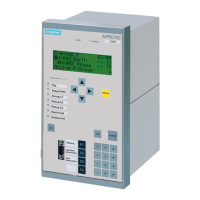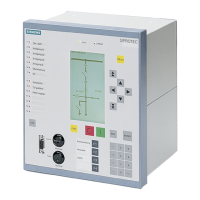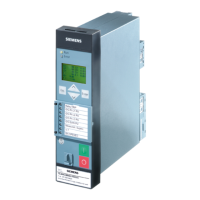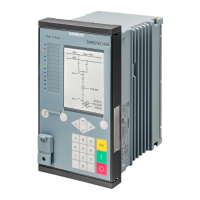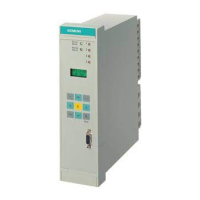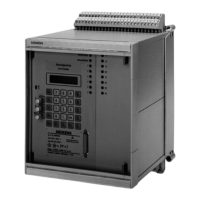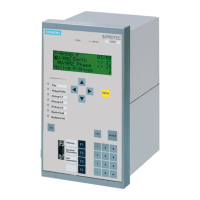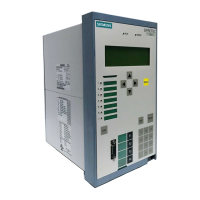Functions
2.6 Flexible Protection Functions
SIPROTEC, 7RW80, Manual
C53000-G1140-C233-1, Release date 10.2010
84
Measurement Process
The following table lists configurable measurement procedures depending on parameterized measured quan-
tities.
Table 2-8 Parameter in the Setting Dialog "Measurement Procedure", Mode of Operation 3-phase
Mode of
Operation
Measured
Quantity
Notes
Three-phase Voltage Parameter
MEAS. METHOD
Setting Options
Fundamental Harmonic Only the fundamental harmonic is evaluated, higher harmon-
ics are suppressed. This is the standard measurement proce-
dure of the protection functions.
Note: The voltage threshold value is always parameterized
as phase-to-phase voltage independent of parameter
VOLTAGE SYSTEM.
True RMS The True RMS value is determined, i.e. higher harmonics are
evaluated.
Note: The voltage threshold value is always parameterized
as phase-to-phase voltage independent of parameter
VOLTAGE SYSTEM.
Positive Sequence
System,
Negative sequence
system,
Zero sequence system
In order to implement certain applications, the positive se-
quence system or negative sequence system can be config-
ured as measurement procedure, for example
- U2 (voltage asymmetry)
Via the selection zero-sequence system, additional zero-se-
quence current functions can be realized that operate inde-
pendent of the ground variable Vn, which is measured direct-
ly via transformers.
Note: The voltage threshold value is always parameterized
always parameterized according to the definition of the sym-
metrical components independent of parameter VOLTAGE
SYSTEM.
Voltage Parameter
VOLTAGE SYSTEM
Setting Options
Phase-to-phase
Phase-to-ground
If you have configured address 213 VT Connect. 3ph to Van,
Vbn, Vcn or Vab, Vbc, VGnd, you can select whether a 3-
phase voltage function will evaluate the phase-to-ground
voltage or the phase-to-phase voltages. When selecting
phase-to-phase, these variables are derived from the phase-
to-ground voltages. The selection is, for example, important
for single-pole faults. If the faulty voltage drops to zero, the af-
fected phase-to-ground voltage is zero, whereas the affected
phase-to-phase voltages collapse to the size of a phase-to-
ground voltage.
With phase-to-phase voltage connections the parameter is
hidden.
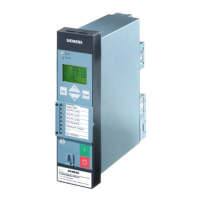
